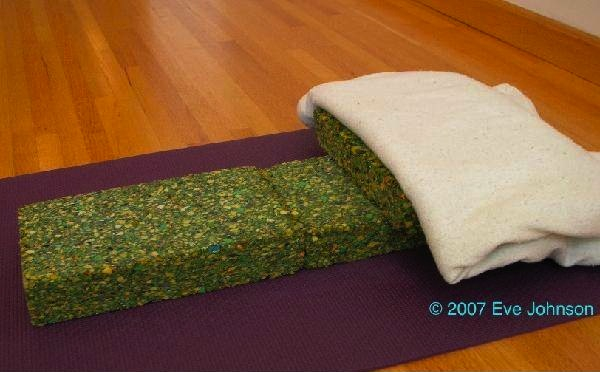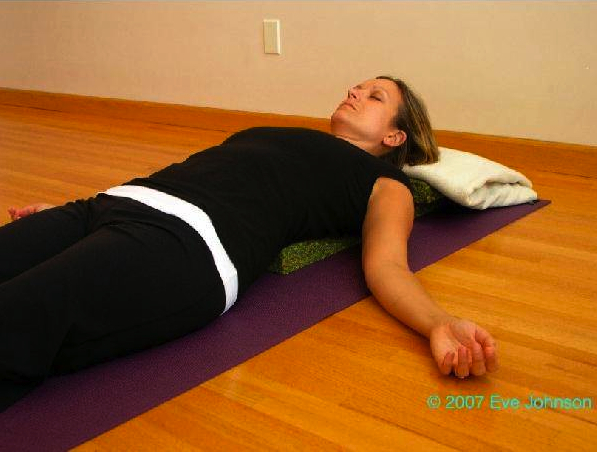I’ve come to believe that forming good habits would be a cinch if “first thing in the morning” could happen more than once a day.
Nothing lets us start a daily practice more easily than resolving to do it first thing. We’re fresh from sleep. The world has yet to place legitimate demands on us. As long as everything is set up the night before and ready to go, all we need to do is get out of bed and the habit we want to create – meditation, breath work, writing, asana practice, a long walk or a trip to the gym – can reliably be ours.
Problem is, there’s usually more than one activity competing for that single space. Sometimes it’s a 5:30 a.m. hockey practice, or a punishingly early start time to the working day. Other times it’s a choice between two activities we’d dearly love to make a part of our lives. But you can’t, for example, write first thing, accessing the pristine mind on the borders of sleep, and have the same mind available for breathing practice.
I can wake up and do breathing practice, no problem. I can, with considerably more struggle, have a cup of something hot to drink, and write as I drink it. (Shouldn’t I check email? What about the laundry? What if it’s a sunny day in February – shouldn’t I walk to the beach while the birds are at their most active?)
After that, all bets are off.
What I need is another “first thing in the morning,” and that’s not going to happen.
Transitional moments, however, come scattered through the day. And while they don’t have the magic of the transition from sleep to waking, as long as we slow down enough to notice and take advantage of them, they can work as hooks to hang a habit from.
This week’s Five-Minute Yoga Challenge is to find a time of the day to lie down and watch your breath.
If first thing in the morning is available, congratulations. Learn the setup and you’re on your way.
If early morning isn’t going to happen, there are other possibilities.
One of my favorite ways to get small tasks done is the pomodoro technique, which demands a five minute break every 25 minutes. That’s enough time stretch your shoulders or change a load of laundry over, but not enough time to lie down and breathe. But every four pomodoros demands a 20-minute break, which is ample. If you work at home, 20 minutes is plenty of time to lie down and watch your breath, and come back more refreshed than if you’d had a cup of coffee.
As long as you don’t have to rush to get dinner on the table, the transition from work to home at the end of the day is another excellent moment for breathing. Instead of sitting down to watch the news – it will, most assuredly, be on later – take the time for breathing, and perhaps some poses.
Then there’s the opposite transition, from waking to sleep. Do your breathing just before bed, and it will lead you to a sounder sleep.
Here’s how to set up:
Place two chip-foam blocks, lengthwise, on the centre line of your mat. Place a third block crosswise on top of the block at the head end of the mat.
Fold a blanket and line up the smooth fold with the edge of the crosswise block.
Set a timer for 8 to 15 minutes.
Sit with your knees bent and roll back so the bottom of your ribcage rests on the bottom edge of the blocks, and the back of your head rests on the blanket.
Check that your spine runs down the middle of the blocks, and your chest feels evenly supported.
Lift your pelvis and lengthen your lower back by taking your tailbone toward your ankles.
Roll your palms to face the ceiling. The knuckles of your middle fingers should rest easily on the floor. Relax your shoulders. Lengthen your legs one by one and let your thighs soften and your feet drop away to the sides. If your feet feel unbalanced, one side releasing more than the other, take your feet further apart.
Relax your face. Soften your eyes. With your lips together and your teeth slightly parted, exhale and relax your jaw. As you exhale, let the weight of your body sink toward the blocks and the floor.
Let your awareness rest on your breath. Notice the moment the exhalation starts, be aware of a soft, even flow of breath, and notice when it ends.
At the end of the exhalation, pause. Wait and let the inhalation come by itself.
When the timer goes off, let your awareness drift away from your breath. Soften your face and eyes, and rest for a breath or two. Bend your knees, roll to your right hand side, then slowly sit up.
If you’re intrigued by breathing, and want to go further, get a copy of Light on Pranayama, by BKS Iyengar, and start reading.
You’ll find a list of benefits for this exercise, under Ujjayi I, that includes: it “makes one attentive, invigorates the nerves, loosens any hardness in the lungs and prepares them for deep breathing.”
Photo by Keith Roper, Flickr Creative Commons
If this was your kind of post, you might also like:
Rooting: a yoga lesson from the garden







Comments on this entry are closed.
Hi Eve,
I just read your post entitled “Every Breath You Take,” and have a question, but comments are closed on that entry, so I’m hoping by chance you will see my question here. I am wondering what I can use in place of chip blocks, which I don’t have, to prop myself for breathing. I do have 3 blankets, foam blocks (and a bolster). Any suggestions on how to gerry-rig up an alternate set up?
And question #2: is an iPad app in the works? :)
Best,
Liz
Hi Liz,
Ah, comments aren’t closed, they’re just moderated, meaning I get a chance to see them before they appear on the blog.
Your three blankets can make a great setup: the simplest is to fold two blankets in half, lengthwise, making sure when you stack them that the closed folds on the long side are alternating – so you don’t have two sets of blanket hems stacked on each other – and that the closed folds on the short sides will be towards your buttocks when you lie down. Put the top blanket about an inch further back than the bottom blanket.
Then make a trifold, working from the short end, on your third blanket, to support your head.
I’m drinking my morning coffee as I write this, thinking that a photo would be useful, but not quite ready to spring into photography mode.
So, does that make sense?
The My Five-Minute Yoga Practice app will run on an iPad, but it will be the size it is on the phone. Because we’d have to re-size all the photos, (and when I say “we,” I mean Dom), and some of them would be less than satisfying in a larger size, any specific iPad version is a long way away.
Thanks for asking. : )
Hi Eve,
I think I get it! I’ll give this a try tonight and see what happens.
Re: the iPad app, I feel quite certain I can survive quite nicely with the iPhone version :). I love your app and welcome it in any form whatsoever!
-liz
Let me know if it works out. If not, I’ll rouse myself to take pictures.
And thanks for your kind words about the app.
This looks so wonderful. I am going to do this right now before I go to bed. J.
Hi Judy,
Now, of course, I want to know how it went.
I hope you had what Keats called “a sleep/
Full of sweet dreams, and health, and quiet breathing.”
Oh, boy, what a TIMELY posting, Eve. Thanks so much. My February classes are focusing on deepening pranayama practice and it seems that all manner of articles and postings and books are coming my way. More to think of, more to incorporate into class and personal practice. I’ll link to your posting on my blog as well! Namaste. Heidi
Hi Heidi,
Good to hear from you!
Funny how that works – you pick a direction and suddenly the world is full of resources to take you there. I’ve heard it called the reticular activating system – the idea being that when we start looking for them, we see things that were already there. I’d like to think it was more of a back and forth, a bit of prakriti outside our skulls rearranging itself to be more in tune with the prakriti inside.
Wishing you rich and deep adventures in your pranayama practice and teaching.
Thanks! I continue to learn so very much about pranayama practice…
Hi Eve,
I can testify that the Pomodoro technique works! I’ve been using it for over six months now (thanks to your introduction to it on this blog) and it has transformed both my work and practice life. Thank you!
Hey Karen,
I’m glad to hear that the Pomodoro technique is working for you. It’s a powerful strategy. I love everything about it, including the little red hen timer I use.